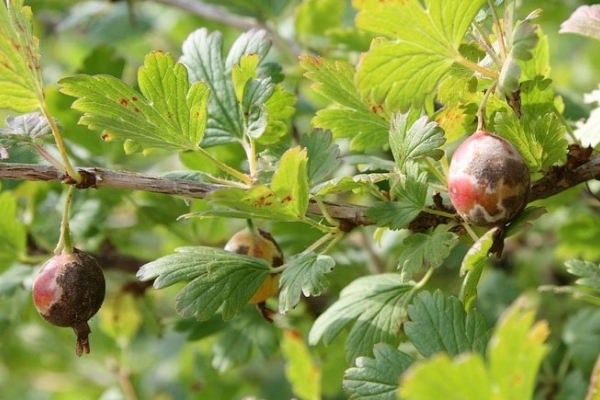Ivan Vladimirovich Michurin, a biologist and the founder of scientific selection, who produced many varieties of gooseberry, called him grapes from the north.
The perennial shrub for many centuries pleases gardeners, but for the wrong care or inattentive attitude to oneself, the gooseberry pays at best with a low yield, at its worst a death from diseases and pests.
Table of contents
What the gooseberry suffers from
In itself a picky plant, the gooseberry can die in two cases, if it was attacked by pests or it got sick.
More often the gooseberry suffers from fungal diseaseswhich spread quickly, as natural phenomena in the form of rain and wind help the spores of the fungus.
Insect pests - aphid, mites and caterpillars - cause irreparable harm to the gooseberry. And even worse, if these two problems are “arranged”, then the bush should be rescued immediately.
First of all, it is necessary to treat diseases of the gooseberry, there are not very many of them, but they are all deadly for the plant.
Diseases and treatment
White patina is powdery mildew or spherotek
It is a disease that affects the whole shrub, first on the berries or on the lower parts of the leaf, white bloom forms - it is urgent to take action already during this period.
The peak of the disease is the end of spring – the beginning of summer, in this stage fungal spores settle, new bushes are affected.In summer, the fungus is strengthened, it creates conidia of several tens of generations, by the autumn - the plant is completely affected.
At first, the plaque is easily removed from the fetus, but if left untreated, it becomes darker, coarser and becomes similar to felt. The whole plant is covered with this felt, it is completely deformed and safely dies in a couple of seasons.
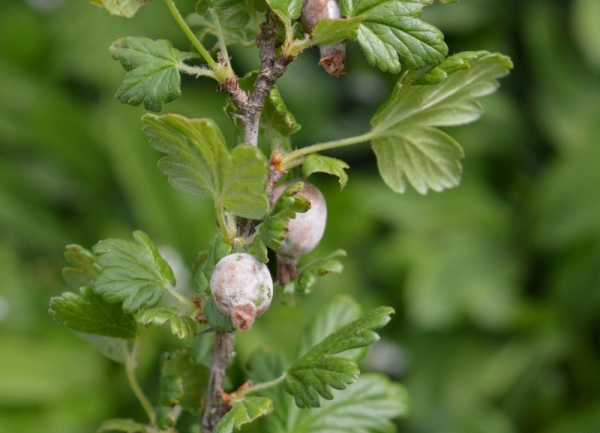
What to do? You can cure it; several methods are used for this:
- mix a solution of soda ash with a small amount of soap (50/50), dilute in ten liters of water, spray the bush before budding;
- mix hay hay with greenhouse earth, make an infusion (the infusion should stand for about three days), dilute with 1/3 of water, spray the whole plant 3 times per season, before flowering, after flowering and in the fall, before the foliage falls;
- dry mustard powder (2 spoons), young garlic shoots and horsetail - boil for 30 minutes, cool, process the whole plant;
- tincture of tomato stepsons with laundry soap (50 grams) - spray a bush, plant the plant stems for the winter period with tomato stalks.
Mealy dew harms not only the gooseberry itself, but many nearby plants suffer from it.
What to do with anthracnose?
Small brown spots that grow, affect all the leaves, they fall off, the young shoots stop their growth, the harvest is almost coming to naught.
With this ailment, it is necessary to burn the entire leaf, the fungus will remain on the unmade leaves in the spring.
Further fight:
- spray copper sulphate per 10 liters of water 40 grams;
- spray with Bordeaux mixture - 4 times per season, before flowering, after flowering, two weeks after the second spraying and the last time - after picking the fruit;
- you can apply kuprozan, colloidal sulfur or homycin.
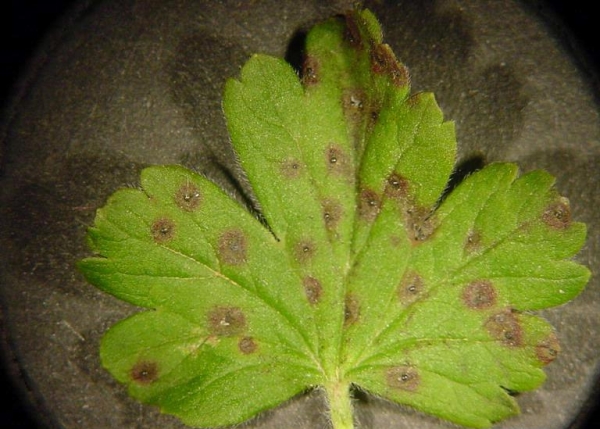
How to get rid of septoria?
The most suitable moment for its development is from the end of spring to the beginning of the summer season, the lower parts of the leaves are covered with white bloom or gray spots, therefore it is also called brown spot or white spot.
If the plant is not treated, brown seals form on the tips of the leaves, and black dots appear on the leaf, and shoots on the bush are affected. The leaves dry and fall off within a month.
How to get rid of: affected branches and fallen leaves should be immediately cut off and burned, because the fungus does not die with the leaves. After removing the affected places, the bush must be treated with fungicides.
With septoria, the bush needs in copper, manganese, zinc and boron, they need to be applied to fertilizers and mixed with the soil around the bush!
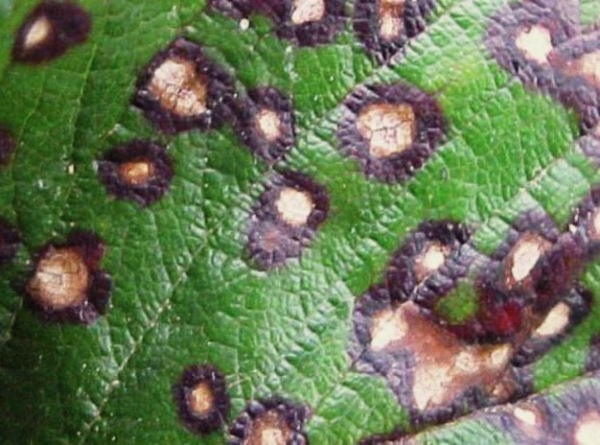
Glass rust, or why fruits fall
It affects gooseberry leaves with rusty, orange stains in the form of goblets. The plant is also infected at the end of spring, at the beginning of summer the plant is changing, deforming. Berries become ugly and fall off.
Impress:
- universal solution - crystalline hydrate (30–40 grams) per 10 liters of water, process everything completely, up to the soil under the bush and around the bush;
- constantly apply fertilizers based on phosphorus and potassium.
Remove sedge, if it is in your area, or drop gooseberries to a higher place where water does not stagnate.
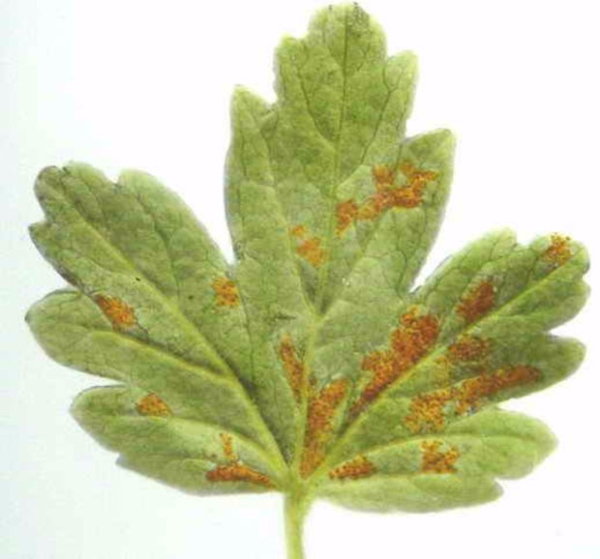
How to deal with the mosaic on the gooseberry?
The yellow pattern along the leaf veins causes the leaves to wrinkle, the plant ceases to bear fruit.
Only prevention will help, quarantine, treatment of sucking insects and disinfection of garden tools.
Does a bush shed its leaves? Pillar rust!
Occurs on the plant because of its proximity to conifer trees. The leaves are covered with orange pads, these are spores formed during the summer period.
As a result, the bush can shed its leaves, the growth and yield is reduced. The fungus transfers the winter period on the fallen leaves of the currant and on coniferous trees.
Treatment:
- columnar rust is treated in the same way as with anthracnose diseases;
- Be sure to dig the soil around the bush and burn fallen leaves.
It is important not to plant gooseberries next to conifers.
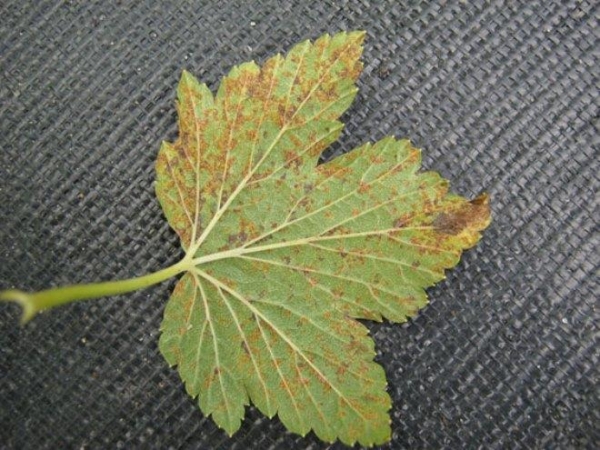
Garden pests and control measures
Gooseberries can die from pests, there are as many of them as diseases, and if you do not pay attention to them, you can be guaranteed to lose the summer berries.
For example:
- caterpillars - “Parent” sawfly butterfly or moth, eat the ovaries, shrub the web with cobwebs;
- aphid - affects both leaves and shoots, pierces blood vessels, can harm for a long time, because it is difficult to immediately detect;
- glass - eats the core of the shoots;
- currant gallitsa - the larvae eat flowers, shoots, leaves;
- mite - penetrates the gooseberry buds, feeds on the juice of young leaves, in addition, it is a carrier of terry virus.
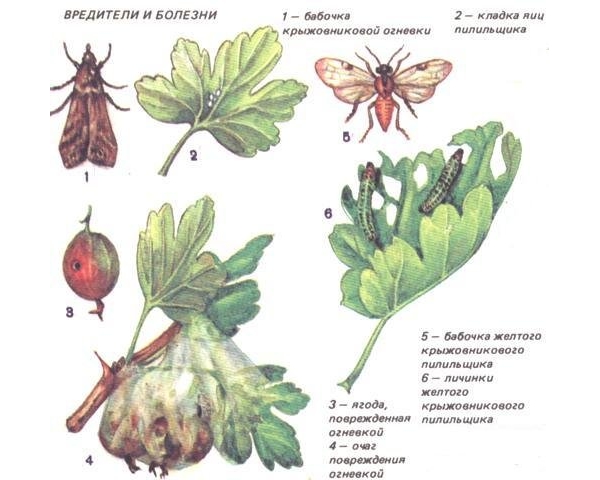
It is possible to fight these pests with the same preparations, the main thing is that we should not stop at one spraying.
As soon as the kidneys unfold, immediately process karbofos or aktellik and continue to spray until the buds appear, the next treatment after flowering.
Remove and destroy all damaged shoots and leaves, if the bush begins to dump them.
Useful tips and methods of prevention
In order to be able to drink tea with gooseberries on a winter evening, one should constantly monitor its condition, observe agrotechnical rules, and carry out mandatory prophylaxis.
All these measures will help to save both the bush and the harvest, and so that it is regular, the plant must be watered on time, especially if summer is hot - this berry respects coolness.
It is necessary to feed the bushes in time.. To do this, organic and mineral fertilizers are needed, for example, in the spring, before the dissolution of the kidneys, apply ammonium nitrate (25 grams) and urea (30 grams) per square meter. meter.
A year later, in the fall, potash-phosphate fertilizers are rotted manure, potassium chloride and superphosphate.
Standing back to the bush, scatter the fertilizer around at a distance of about two meters, loosen the ground, because the root system is at a depth of up to half a meter.
Potash phosphate fertilizers and their use in the autumn period:
Fruit shrub: and the watchman, and diet berry
Berry culture is used to prepare compotes, jelly, and jamIt is not the last in cosmetology and nutrition, because the berry has a high content of fiber and vitamins.
Mature gooseberry bush reaches 1.5 m in height and two meters in width, the plant is perennial, multi-barreled and, if it is well cared for, it will still be fruitful. Sometimes from one bush can collect up to 25 kg northern grapes.
On the plot, it can be landed around the perimeter of the fence, at a distance of about 1.5–2 m, gooseberry grows and will play the role of watchmanbecause no stranger will pass through his thorny jungle.
